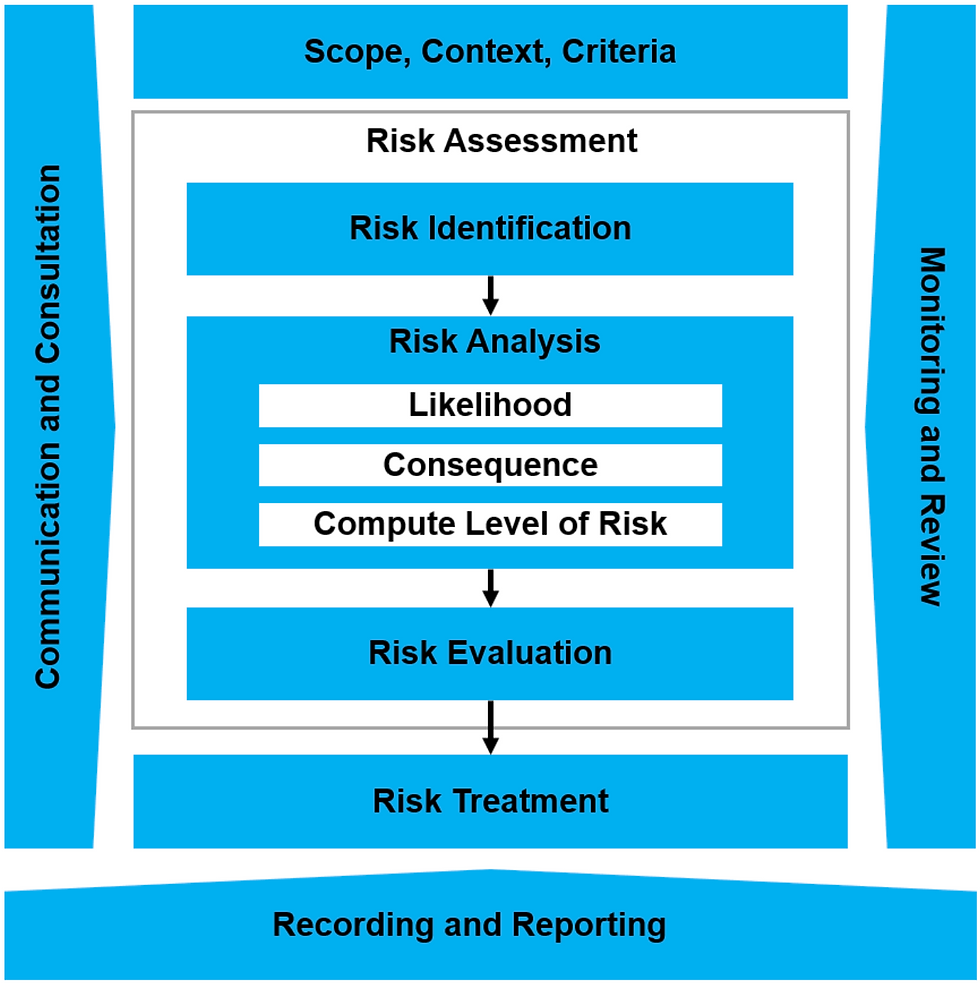RISK COMMUNICATION
- Chegan SRM

- Feb 16, 2021
- 2 min read
Updated: Apr 8, 2022
Strong and effective communication is the foundation of the risk management process.
Effective communication is underpinned by written documents, policies, procedures and practices governing all aspects of an organization’s behavior and performance. Channels of communication can be formal (hierarchical system), institutional (less formal, such as work groups) or informal (scribbled notes or ad-hoc gatherings). Risk communication should be an ongoing process in order to identify risks, encourage dialogue, and influence attitudes, decisions and behaviors during the risk assessment process.

As with other aspects of the Risk Management Cycle, there are a few basic questions that can help guide the Risk communications process. These include:
What information should to be communicated?
Who does it need to be communicated to?
How can relevant information be communicated most effectively?
Communicating risk will sometimes apply to the public. For example, the public will need information on topics such as how to prepare a “grab bag” in the event of a natural disaster such as a flood, earthquake, or wildfire. The audience’s opinion will be judged based upon the content of messages and the delivery system. The figure below is an example of elements that will help to make the message successful.

Effective risk communication delivery methods to public include but are not limited to:
Public alert or announcement (escaped convict, epidemics)
Warning systems (impending tornados)
Brochures or flyers (rise in crime rates in local areas)
Television ads (dangers of drink driving, smoking)
Posters (washing hands after toilet breaks, practicing protected sex)
Risks must be clearly communicated in order to highlight concerns up the chain of command. Otherwise, there is a greater chance that risk mitigation strategies to counter the threat may be misunderstood or ignored. In turn, the flow of information of risk needs to be filtered down to all employees in order to keep members of the public or lower-level staff members aware of identified risks.
Effective communication ensures everyone involved is working toward the same goals and that vital information about known hazards or potential threats is disseminated to all levels. If the risk communication process is weak there’s a greater risk of threats being ignored or misunderstood which may result in mistrust. Strong and effective communication is the foundation of the risk management process, it should be ongoing, factual and planned for as part of the overall risk management effort rather than an afterthought. I.E. Failing to prepare, is preparing to fail.
Want to give your business a clean bill of health or identify potential flaws in your current processes? Chegan SRM would love to hear from you.
See also:



